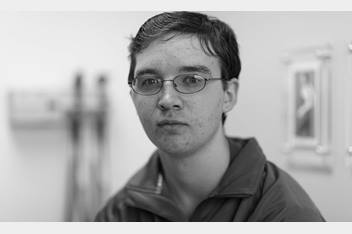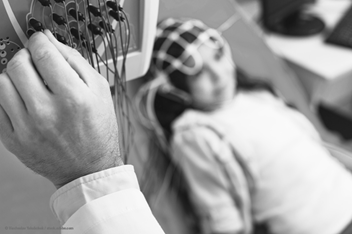Vagus Nerve Stimulation (VNS) for Epilepsy
What Is Vagus Nerve Stimulation (VNS)?
Vagus nerve stimulation (VNS) is a treatment for epilepsy that helps reduce the frequency and severity of seizures. A small device, like a pacemaker, is placed under the skin in the chest and connected to the vagus nerve in the neck with a thin wire. The device sends mild electrical pulses to the nerve, which communicates with the brain to help control seizures. While not a cure, VNS is often recommended when medications don’t work well enough. The device works automatically and can also be manually activated with a magnet if a seizure starts. VNS is adjusted over time to fit your child’s needs, making epilepsy more manageable and improving quality of life.Who Is a Candidate for VNS?
Every child’s epilepsy journey is unique. Your doctors will review your child’s medical history, brain scans, and test results to decide if VNS is a good option. VNS might be considered if:- Seizures aren’t controlled by medication: Your child’s seizures continue even after trying different anti-seizure medicines.
- Medication side effects: Your child experiences serious side effects from anti-seizure medicines.
- Other treatments haven’t worked: Your child is not a candidate for other epilepsy surgeries, or these surgeries haven’t worked in the past.
What Are the Benefits of VNS?
VNS is typically recommended for children with epilepsy whose seizures cannot be fully controlled with medications. It is a palliative surgery, meaning it is not designed to cure epilepsy but to reduce the number and severity of seizures. By providing regular electrical stimulation to the vagus nerve, VNS can help make seizures shorter, less intense, or less frequent, improving your child’s overall safety.About half the patients who receive VNS therapy experience a significant improvement in their seizure’s severity or frequency. In some patients, VNS therapy allows for adjustments to medications, such as reducing doses, which can help minimize side effects.
What Are the Risks of VNS?
While VNS is generally safe, there are some potential risks and side effects to be aware of:Voice changes: Because the vagus nerve is near the vocal cords, the stimulation can cause changes in your child’s voice, such as hoarseness or a vibrating sensation. These changes are usually temporary and only occur during stimulation.
- Breathing effects: Some children may experience mild effects on breathing, like shortness of breath or coughing, particularly during stimulation. These are usually not harmful and improve as the device is adjusted over time.
- Infection or bleeding: There is a small risk of infection or bleeding at the incision sites.
- Pain or discomfort: Your child may feel temporary pain or discomfort at the incision sites or around the device after surgery. This is usually manageable with medication.
- Device issues: The device or its components may malfunction, requiring adjustments or, in rare cases, additional surgery to repair or replace parts.
- Continued seizures: While VNS can reduce the frequency and severity of seizures, it does not completely stop seizures for all children. Some children may continue to experience seizures or develop new patterns of seizures.

Vagus nerve stimulation (VNS) uses a small, implanted device to send regular electrical signals to the vagus nerve in the neck, helping to reduce seizures.
Key: Size comparison (blue dot); Pulse generator (black dot); Stimulation contact (orange dot); Vagus nerve (teal dot)
What Happens During VNS Surgery?
During VNS surgery, your child will receive anesthesia to ensure they are asleep and do not feel any pain. The surgeon will make two small incisions — one in the chest and another in the neck. Through the neck incision, a thin wire (lead) is carefully attached to the vagus nerve. The wire is then connected to a small device, called a pulse generator, which is implanted under the skin in the chest. Once the device and lead are in place, the surgeon will test the system to make sure it is working correctly. Afterward, the incisions are closed with stitches or glue.
What Happens After VNS Surgery?
After the surgery, your child will be transferred to a recovery area where they will wake up from anesthesia. Doctors and nurses will closely monitor their healing. The surgical site will be checked regularly, and your child’s care team will watch for any signs of complications, such as swelling or infection.When your child has recovered most of the way, they will go home. Your child will continue their anti-seizure medicines at the usual doses and see the Neurology doctor a few weeks after surgery to have the VNS device programmed.
Your child will also get a magnet kit when their VNS device is placed. The magnet can be used to swipe over the device in your child’s chest area when they feel a seizure coming. The magnet adds an extra dose of stimulation to shorten or stop a seizure once it begins. Regular follow up appointments in our clinic are needed to monitor progress and adjust the VNS device.
Medical Reviewer: Ammar Shaikhouni, MD, PhD, Nationwide Children's Hospital
Date Last Reviewed: 7/25/2025
The information provided here is only for general reference and should not take the place of medical care or patient education. If you have any questions, please call our Epilepsy Surgery Clinic at (614) 722-4625.


